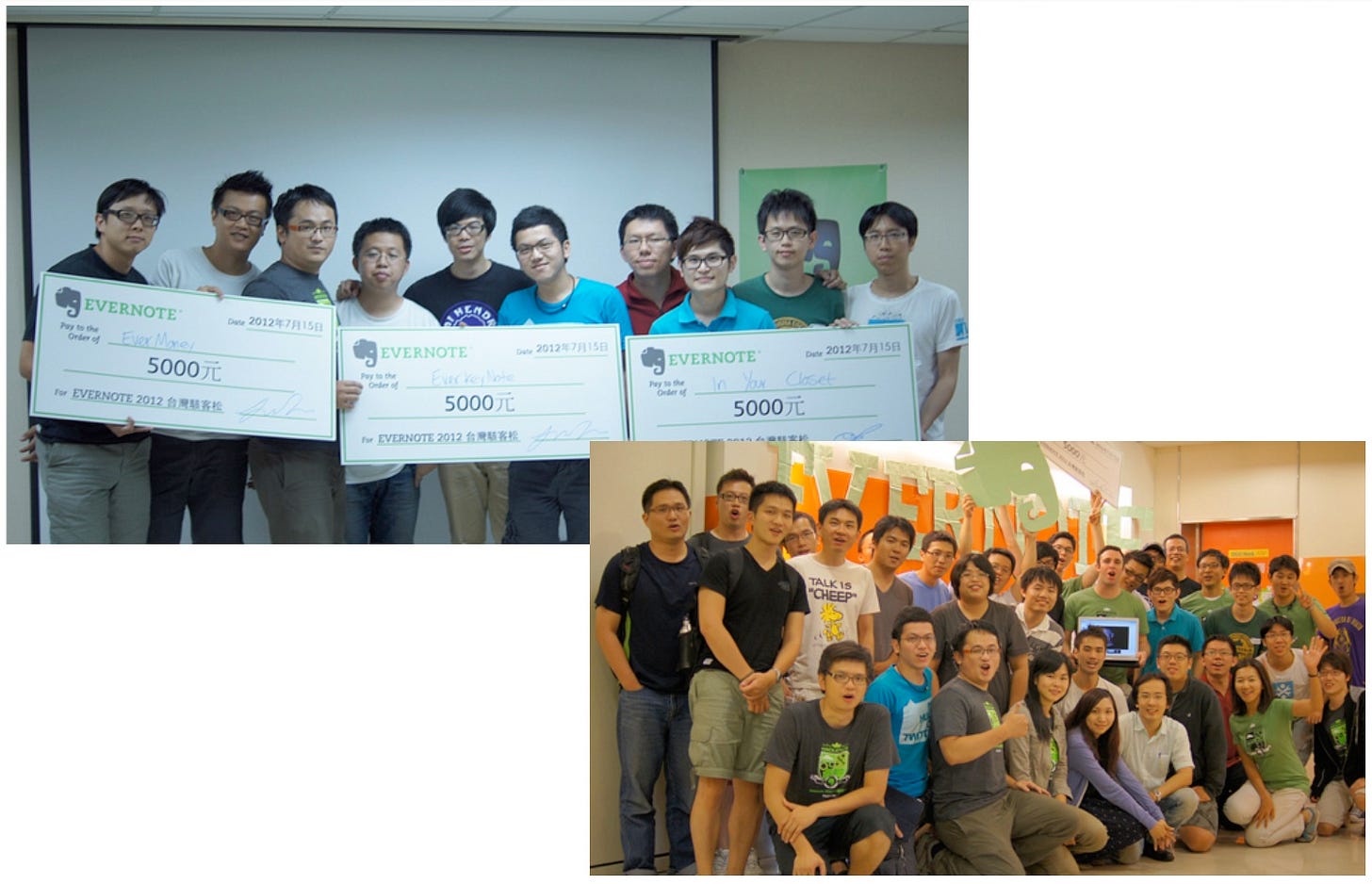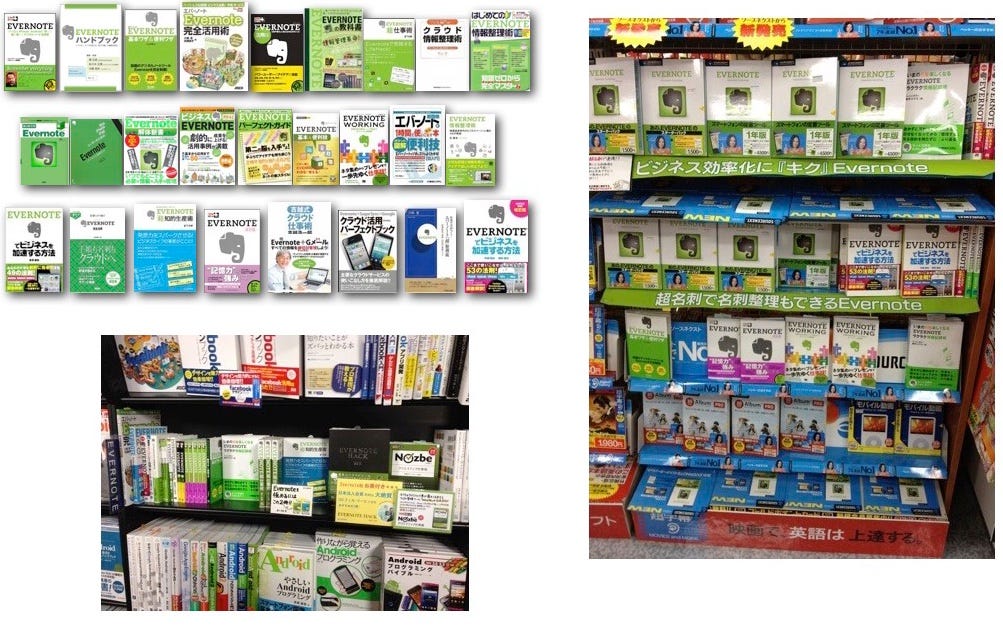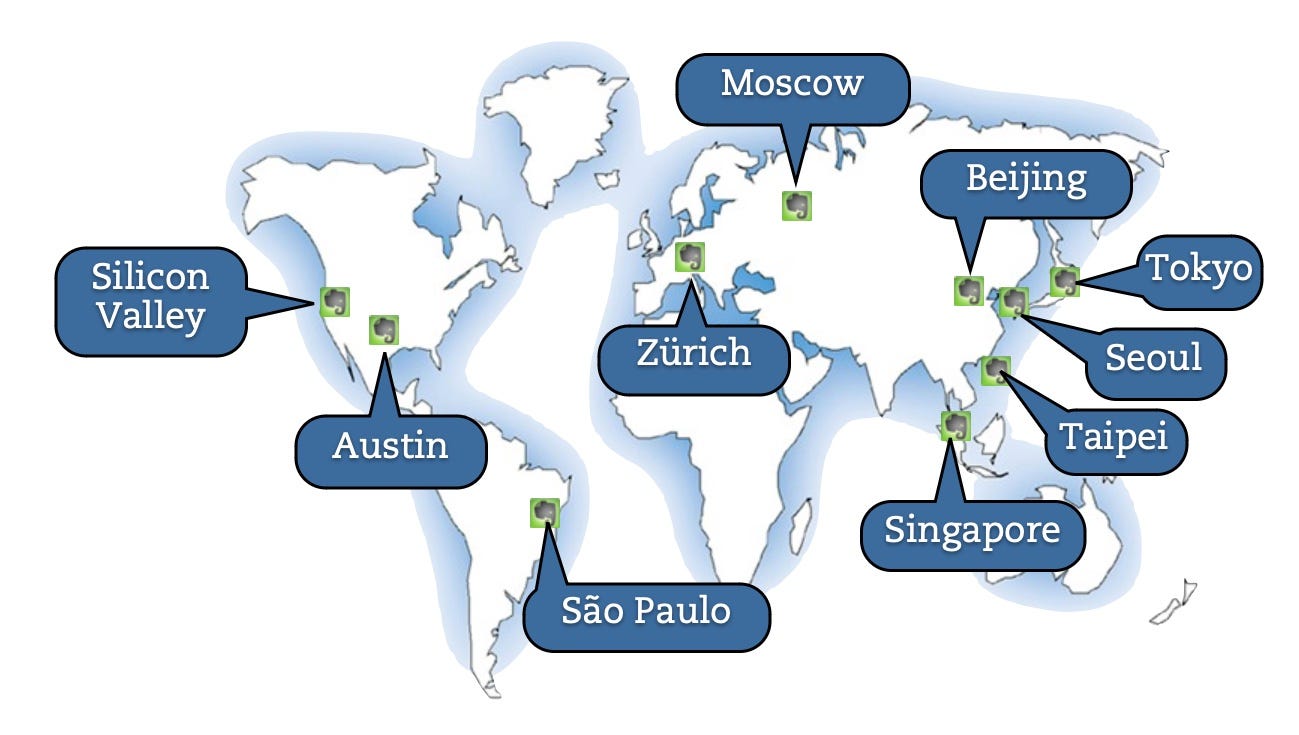Scaling Beyond Borders: A Startup's Playbook for Going Global
So, You Are Looking to Take Your Thriving Tech Business To New Markets...
Introduction
You lead an up-and-coming startup that made good progress: ideated, built a killer product, conquered the market, and nailed your product-market fit. In other words, you completed the "0 to 1" part of your startup journey. Congrats on conquering your home turf. Now, you're considering expansion overseas. 🌍
Sure, it may seem daunting, but don't sweat it – by now, we have well-developed best practices and frameworks for international expansion. You can find them in books, blog posts, and podcasts. Still, it's not common knowledge, and I see a lot of confusion and missteps. This essay is my contribution – my framework for planning and executing global expansion – a "bird's eye" overview of key considerations and tactics, drawing from my 12 years in the field and conversations with industry leaders. It's aimed at startup founders and heads of International, Product, and Marketing.
I'll keep it practical and actionable, covering:
Why go global
Product-Market Fit's role
Selecting your next market
Prepping for global expansion
Internalization & localization
Go-To-Market in new geographies
Real-world case studies
Team "International" within the organization
Heads up: This essay focuses on digital B2C.
B2B, B2G, and physical/IRL businesses may need to do some tweaks.
Why Go Global
So you’re contemplating a launch overseas. It's a big deal, so make sure you're doing it for the right reasons and at the right moment. Here are the main reasons to spend time and resources on international expansion:
New customers and revenue - Leverage your product across a broader base
Partnerships - Open opportunities unavailable locally
Capital - Attract international investors
Talent - Recruit globally
Risk diversification - Reduce dependence on one market
Also, be clear on what "going global" entails for you - just selling internationally or building products abroad too?
The way I think about it, it's an efficient way to leverage your product and marketing investment across a broader customer base.
Key Ingredients for Going Global
Nail Product-Market Fit First
Expanding to new markets before you find your Product-Market Fit (PMF) is very risky - it's better to focus on your core market first. Usually, it would be your home market - the region where you are located and which you understand best. Once you’re post-PMF, it's time to explore new markets. You are also likely to have the resources for expansion at that point.
Expanding to new markets before you find your Product-Market Fit
is very risky - focus on your core market first
Achieved PMF at home? Great, but don’t assume it’ll just transfer. Treat each new market like a mini-startup – not starting from scratch, but not just copying your model either. The corollary: You need people similar in caliber to those who found your initial PMF.
You need people similar in caliber to those who found your initial PMF.
Your company mission should be universal, but the value you provide may differ by market. Some markets may not even need your solution – proceed cautiously. Major product adaptations, not just localization, may be required.
Examples
Lingualeo, an English-learning app, thrived in Eastern Europe, Turkey, and Brazil. But when we looked at Northern European countries, we realized they had very high English literacy and didn't need Lingualeo that much.
ClassDojo started and achieved success in the U.S. Two of its core functions are classroom behavior management and class messaging. The messaging caught on in the U.S. mainly because schools and parents don't rely on general-purpose messengers. In many other countries, school communities are happy to use WhatsApp or basic phone texting and have little interest in switching. This was a sign for ClassDojo to focus on its classroom behavior management.
Classical problem: Many U.S./European desktop-first companies struggled in emerging "mobile-first" markets.
Counter-example: Evernote is a productivity tool that serves the basic human need to remember. So, we didn't have to change its core functionality when we went global. We did perform a deep localization. More on that later. Many of our everyday online services are in this category: Google search, mail, docs; MS Office; Notion; Figma... ChatGPT.
Reevaluate business model factors - b2b vs. b2c, monetization, user acquisition funnel - in each new market.
Selecting Your Next Market
I use a combo of "Push" and "Pull" methods to identify potential markets. Push is where you want to go based on your research of market need, the size of the market you can realistically capture, market structure, competition, etc. Pull - where you see early signs of growth. And yes, this does require some basic geo-aware product analytics. Look for overlap. We did this at Evernote, Lingualeo, Buddy.ai, and ClassDojo. More on this later.
Consider:
Upside vs. risk – Expected impact on strategic goals
Barriers to entry – Cultural, regulatory, political, competitive
Cost & readiness – Product localization (in a broad sense), understanding of the market and culture, local connections
Create local customer profiles and evaluate:
Target users - How are they solving this problem now? Buying behavior? Openness to international providers?
Market dynamics - Purchasing power and monetization potential, regulation, competition, social media use, existing user communities
More insights:
It matters where you are launching from. Launching from the U.S. has enormous advantages - success spills over globally. Non-U.S. companies should consider establishing themselves in the U.S. first. Suppose this doesn't make sense for some reason. In that case, building up some name recognition in the U.S. may still be worthwhile - going through Y Combinator or another top accelerator, raising money from U.S. investors, reaching out to the U.S. press... This is pretty much in the playbook of Israeli startups.
Larger markets have higher barriers - competition, costs, and customer expectations. E.g., high standards for privacy in Japan and Germany; fierce competition in the U.S., Japan, and Korea; complex regulations in China, India, and Brazil.
If starting in English-speaking markets, consider targeting others with English proficiency first for easier localization and to benefit from brand recognition.
Launching from the U.S. has enormous advantages - success spills over globally.
Non-U.S. companies should consider establishing themselves in the U.S. first
Once you've identified prospective markets, ask yourself: Do I have a feel for this market? It's crucial to physically visit the region to get a true sense of it. Conference attendance, particularly as a speaker, is an excellent way to do so. If that's not an option, consider a tourist visit.
And, with the risk of stating the obvious, there is no such thing as "launching in Europe, Asia or LatAm" - the U.K., Italy and Poland are very different markets. So are Columbia, Chili, and Brazil.
Finally, after all your research, reassess timing - is global expansion the right move now?
Becoming Global-Ready
So, you're going global—great! But first, you need to be global-ready. This affects various areas of your company to different degrees. Here's a quick rundown, but we'll dive deeper later.
These are must-haves for all businesses, though the scope of these activities varies widely:
Product Management & Engineering - Design, internalization, localization from UI to content to payments and ecosystem integrations.
Localization - Translate not just the UI but also marketing materials, help content, legal pages, etc.
Analytics - Add two extra dimensions to many of your data tables and reports - language and region/country.
Marketing - Understand the local market and culture. Build the brand and acquire users - tuned for each market.
Customer support - Handle new languages, cultures, and region-specific features.
Legal - Comply with local regulations like privacy regulation (GDPR) and requirements to host user data locally.
Finance - Handle local accounting, taxes, and currencies.
These depend on the nature of your business:
Sales - Expand your team to new regions, sometimes many time zones away and in new languages.
Partnerships - New regions, new partners.
Corporate Development and Investor Relations - Involved if you are raising capital or buying / acqui-hiring companies in new regions.
Developer Relations - This applies if you are building a platform for developers.
Data Ops / Hosting - You may have to store data locally, either for compliance or performance reasons.
HR - Recruiting and compliance in new regions; dealing with culture-specific issues.
Remember, some of these tasks can take time. Plan ahead and be aware of the shortcuts you're taking – they might catch up with you later. Also, many of these tasks can and should be done in parallel, not sequentially.
Internalization & Localization
The product is the core of your business, so let's dig into internalization and localization. Let's unpack these two closely related but different concepts:
Internalization (i18) lays the groundwork for your software to support new languages and regions. Internalization starts with things like Unicode support, externalizing string resources, and support for right-to-left (RTL) languages and goes into things like new user funnel optimization, integration with multiple regional platforms (e.g., payment and map providers, social networks.) Internalization provides the infrastructure for Localization.
Localization (l10n) is the actual process of adapting the software for a specific region or language. Note that while translation is part of it, l10n is a product function, not a linguistic one.
Localization is a product function, not a linguistic one
Here is a quick rundown of essential things to consider:
Evaluate your product for cultural fit. For instance, some places prefer phone registration over email.
Align your pricing with local purchasing power and buying habits.
Establish I18n coding guidelines - things like Unicode throughout the code base; string externalization; leaving expansion space for verbose languages; handling formats: date/time/name/numeric/address/measurement; not embedding text in graphics, and much more.
Develop glossaries and tone of voice guide for the product UI and marketing assets.
Choose between professional translators or crowdsourced translations. Evernote, for example, combined both.
Optimize the load speed and latency of your product and website.
Think about website structure:
organization by country or language
namespace organization - geo-specific top-level domain (ccTLD) vs. subdomains vs. sub-directories
geo-specific page display logic by geo-IP or language, incl. landing and payment pages, blogs, legal pages
Consider the information density on the page or a screen. Chinese users, for example, expect a packed interface.
Invest in tooling workflows that make localization more efficient:
translation management systems (TMS) – make sure that they work well for your target languages (RTL, CJK, non-latin alphabets...)
integration of the translation server into product and marketing processes (build/CI; lifecycle email; website; CMS...)
QA / LQA instruments and coordination
i18n audit tools
Conduct Language Quality Assurance (LQA) review by marketing-minded native stakeholders.
Localize payments: UI, local currency support, local payment methods, paywalls/trials... E.U., for instance, has a 14-day mandatory refund policy on all digital products/services.
Pay attention to your local language SEO and ASO.
The scope of i18n and l10n efforts varies widely. Sometimes, American English works just fine, like in Canada, the U.K., or Australia. However, you may want to add French in Canada.
Your customers in some countries may be multilingual and comfortable using your product in English. Examples: Singapore, Israel, Scandinavian and Benelux countries. Sometimes, you are targeting just a segment of the population proficient in English. Example: Indian professionals and/or upper-middle class. Still, you should review your marketing for culture fit.
Sometimes, you just need to localize your product's user interface. More often, there are "complications" - content, integrations, data localization regulation...
Examples
Buddy.ai is a self-study app teaching English to young kids. Most learning materials are in English; we had to translate some guidance into the kid's native language. We also had to revise learning materials for cultural fit, things like references to Santa Claus or pork in predominantly Muslim Turkey. On the other hand, the app relies on app stores for payments, so we didn't need to build support for local currencies or payment methods.
One of Evernote's popular and unique functions was handwritten text recognition. At the time, it felt like magic. Adding support for new languages required re-training neural networks that this function relied on. It was especially hard for non-latin alphabets and hieroglyphic systems.
象笔记 (Yinxiang Biji), Evernote China had to be hosted in the PRC, get a business license, integrate with the local social networks, and support local payment methods.
Businesses with a physical, "in real life" component, such as Google Maps, Alltrails, Nextdoor, Uber, and Airbnb, have significant regional operations, and their product functionality and design may vary widely from region to region.
Some technical i18n/l10n considerations that may weigh in on your choice of the first target languages:
German and Slavic languages are significantly more verbose than English and may clutter your UI. Consider running pseudo-localization to test text horizontal and vertical expansion.
Non-Latin alphabets like Greek, Cyrillic, or Korean get complexity bonus points.
Hieroglyphic languages, especially those with vertical text, get multiple bonus points.
Right-to-left (RTL) languages like Arabic and Hebrew add another level of complexity.
Also, your branding needs to resonate locally. Consider:
Is your logo suitable?
Do you need to adapt your visual style guidelines?
Should you translate your company name? Transliterate it into a non-Latin alphabet?
Tune your messaging for cultural fit.
Example: At Evernote, we initially committed to having a singular, global brand – a consistent elephant logo ("Elephants never forget"), uniform visual aesthetics, and the name "Evernote" in Latin script everywhere. This strategy was effective until we reached China. We discovered that the Chinese don't associate elephants with good memory. Plus, pronouncing "Evernote" is challenging for Mandarin speakers. Most critically, we recognized the need to develop a separate service specifically tailored for the Chinese mainland market—I'll dive into that later. Thus, we opted for a separate brand.
Naming was tough. Our new General Manager for China sought opinions from existing Chinese users and consulted Mandarin-speaking team members. The final choice was 印象笔记 (Yinxiang Biji). This name hit the mark: 印象 is widely recognized and positively perceived in China, and 印象笔记 carries multiple layers of culturally nuanced meanings—from ancient Chinese proverbs to hieroglyphs signifying "elephant" and "imprint." The name earned us accolades in China, showed our commitment to the market, and built credibility with users, partners, and developers alike.
We preserved the original logo and visual elements to maintain a clear link to our California-based brand.
As you can see, i18n may have many moving parts depending on the product and can be resource-intensive. Designate a product manager to focus on i18n. Regardless, the entire product team must be i18n-savvy to avoid costly redesigns and adjustments down the line.
Designate a product manager to focus on Internalization
Don't forget, your marketing materials also need to be localized. Here is a checklist:
in-product messages
user communications (emails, in-app messages, and push notifications)
email templates, newsletters
app store product descriptions
website, landing pages, etc.
relevant blog posts
social media
videos
tutorials & training materials, Support KB / Help Desk...
the press kit
Also, consider translating your legal pages - Privacy Policy, Terms of Service, EULA, etc. Make sure to involve your Legal!
Keep in mind that "localization" is not the same as "translation" – you need to adapt your assets to the market. Sometimes, this means creating the materials from scratch. Either way, it's essential to get all marketing materials reviewed by marketing-minded native speakers. You want to come across as committed to the market, and quality l10n is the first step in this direction.
Phew... lots of work - and lots of moving parts. Now, the good news is that recent advances in AI in general and Large Language Models in particular have improved auto-translation tools and can deal not just with text but also with images, audio, and video. This boosts translator productivity and reduces the cost. These tools evolve quickly, so it's worth reviewing your tooling every time you embark on a sizable l10n project. Moreover, these technological advances may make crowdsourcing more practical - if you have a loyal user base.
i18n and l10n are complex topics, and we barely scratched the surface with this "breadth-first" overview. Go deeper and look up up-to-date best practice resources if and when you need to deal with them hands-on.
Takeaway: When planning your new market entry, consider the role of all business functions
Go-To-Market in New Geographies - Case Studies
There are no universal recipes for entering new markets. It all depends on your product and resources. So, we'll look at some real-world examples.
But first, a few general points:
Set your success metrics and ensure you're tracking them. Example: Do you prioritize user numbers, engagement, or revenue?
Monitor external metrics like country search and app store rank, especially at the beginning.
Consider testing the waters with low-effort market tests. Your toolbox includes things like a landing page with a waiting list CTA, a pilot ad campaign, or even partial product localization.
Start with your home market playbook. Review the tactics that worked at the "0 to 1" phase and revisit the entire toolbox of marketing tactics, including those you haven't used previously - you are entering a new market, after all!
I'm not big on outsourcing a new country marketing to an agency, especially if you are doing paid user acquisition. I've never seen this working well - for some reason, it’s hard to align the incentives. Working with local PR firms and distribution partners directly works better.
The best way to localize the product is to do it with your users - build a relationship with your early adopters in the region, be transparent, earn their trust, get their input, take is seriously, and act on it.
Cultivate local user communities:
Community is more important in Asia and LatAm than in the U.S. and Europe.
Prerequisite - users get to love your product.
Meet your users where they already are – Facebook, Whatsapp, Weixin / WeChat, Twitter, Reddit...
Task your regional teams in community building.
Maintain regular communication channels with your local users in their language - newsletters, blog posts, social media channels...
Identify and reach out to local superspreaders - thought leaders and influencers; leverage their credibility.
Keep your external advocates happy - promote them through your communication, invite them to conferences and podcasts…
Case Evernote
Evernote is an "external brain," allowing users to capture, organize, and retrieve information. It started in the U.S., and its founding team included several Russian Americans. Early international expansion was one of our unconventional decisions – we started it immediately after launching the service in its current form and gaining strong U.S. —despite having just a few months' worth of financial runway. Our rationale was that Evernote addressed a universal need, allowing us to leverage our product and marketing investment over a broader user base. Our limited resources also prompted creative, low-budget go-to-market (GTM) strategies.
Evernote New Country Playbook
Here is the short version - how to conquer a new region in 12 easy steps:
Set up the infrastructure for future localizations; build i18n and l10n tooling, including support for crowdsourcing translations. In the meantime, monitor organic interest in your English-language product.
Once you observe a meaningful level of organic interest, go for initial, skin-deep localization into the country's language(s). Open up for translation to see if community support is strong enough to support crowdsourced translation. Pay attention to new language SEO and ASO. Watch for the impact of localization effort. If it moved the the needle, proceed.
Take a field trip into the region - attend conferences, meet users and potential partners, network with expats, startup incubators, prominent startups, influential press, and bloggers. Get a feel for the lay of the land. Engage a local PR firm or contractor.
Initiate a low-cost PR campaign leveraging the content from headquarters, enriched with local narratives. Watch for the impact of this PR effort. If impactful, proceed.
Identify key strategic partners, if any.
Put the boots on the ground - engage a Market Development person. At Evernote, most Market Development people were "jacks-of-all-trades," entrepreneurial-thinking self-starters, technical enough to act as a conduit of user feedback to the Product team, marketing-minded, able to manage distribution partnerships, work with the local PR people and build up the user community. Importantly, they understood both local and U.S. business cultures.
Go deeper in product l10n – implement new language handwriting recognition; integrate with local platforms and ecosystem partners (maps, social networks...)
Localize payments – pricing, support for local currency, and payment methods. Each of these actions notably increases conversion rates, ARPU, and LTV.
Localize the brand messaging so Evernote resonates with the local audience. Create a regular marketing tempo - leverage assets and campaigns from HQ and other regions.
Consider formally announcing your market entry. If possible, align the timing with a relevant conference and aim for a speaking opportunity. Try to get an app store featuring around the launch time. Present the country's Market Development people to the user community and local press. Reach out to the target media, explain the product value. Provide some numbers, global and region-specific. Add customer testimonies. Announce promos, if any. Announce local partnerships if ready. Make executives available for media interviews.
Keep building the local user community - meetups, ambassador programs, contests, and giveaways...
Start offering local language Support when you hit about 1 million registered users.
At this stage, we often had a small team in a new country, sometimes even opening a minimal office. In some cases, local laws made us set up a legal entity to comply with local labor, tax, or foreign exchange regulations. Still, these operations had minimal budget, mostly payroll.
Takeaway: It's possible to test a new market at a reasonable cost and gradually ramp up your efforts as you gain traction.
This playbook worked in two dozen countries. Japan and China were exceptions—I'll delve into that later.
In five years, Evernote supported 30+ languages on 14 platforms and ran marketing campaigns in 26 countries outside North America. We had 70% of users and a majority of revenue from outside the U.S. We even set up seven international offices and a China-specific service.
For the timeline of Evernote's international expansion, refer to Appendix A.
Additional details
Starting in the U.S. and being a darling of Silicon Valley gave us a significant advantage internationally. Even before tackling localization, we had a global user base, and U.S. media coverage amplified our visibility.
We chose Russian as our pilot language for i18n and l10n primarily because it uses the Cyrillic alphabet, is more verbose than English, and we had several Russian speakers on our team.
Evernote's large and devoted user base helped us in localization. Volunteers eagerly contributed translations, complemented by professional translators for key languages where we were running marketing campaigns.
When considering PR firms, we initially looked at large international agencies offering a "single window" service. However, we found that a more direct relationship with PR folks on the ground was far more effective. Smaller boutique agencies specializing in tech startups yielded the best results.
We onboarded Market Development specialists before diving deep into community-building efforts.
After launching in half a dozen countries, we brought in Regional General Managers responsible for EMEA, Japan, China, the rest of APAC, Russia, and LatAm. For example, EMEA GM was promoted internally, while for APAC and LatAm, we hired California-based entrepreneurs with regional expertise.
Despite lacking built-in viral mechanisms, our growth was mainly organic until the launch of Evernote for Business years later. We supported word of mouth with active marketing campaigns. The Evernote Marketing team invested heavily in content marketing, PR, and SMM from the early days.
Evernote blog served as the central hub for all these activities. The Marketing team regularly posted product updates, user stories, tips, partnership and corporate news. We also had a separate technical blog. We pushed these posts into all our social media channels, central and regional. Most of this content was created by the HQ, localized and reused by local teams. We also sourced cool user stories from other countries into the main English-language blog.
Local teams were instrumental in adapting Evernote messaging to resonate with local traditions and cultures. For example, we tapped into Korean and Japanese note-taking traditions to connect with the user communities at a deeper level.
Many of our local hires were members of our user community and already knew the product inside out.
Evernote started building the developer platform a couple of years after the launch. We opened to developers the API Evernote uses for its apps. A few years later, we had over 1,200 publicly launched integrations.
When Apple and Google launched their app stores, we made the point to have the app available on the store launch day. This effort paid off - the discovery worked well in the early days, as there were few high-quality early apps, and app stores regularly featured Evernote apps. All this gave us an exceptional distribution channel.
Evernote's local teams invested in community building and influencer marketing. We spoke at regional and international conferences, organized user meetups, developer competitions, hackathons, and influencer relationships. This was particularly successful in Korea, Japan, and Brazil. For example, at some point, we counted 35 Japanese books about Evernote. And in Korea, our user conferences attracted thousands of people and were profitable - attendees paid for the tickets.
We even held our own conferences in San Francisco, including a developer contest with a $100,000 prize pool, attracting nearly 1,000 developers worldwide.
Distribution partnerships were another major source of growth. The HQ Partnership team drove most deals with U.S. and multinational companies. Local Market Development people handled local deals. See major partnerships in Appendix B.
Special case: Evernote Japan
In Japan, we modified the algorithm above – and went all in on distribution partnerships early on. Mobile operator DOCOMO, reseller SourceNext, device OEMs, and Nikkei were instrumental in Evernote growth. We also did a lot of community building. The CEO and heads of Partnership and Marketing put a lot of effort into this market. It all paid off - Japan quickly became the 2nd largest Evernote market after the U.S.
Special case: Evernote China, 印象笔记
By the time we felt that it was time to launch in China, Evernote was already a global brand. We had a modest customer base in the People's Republic of China (P.R.C.) using it in English. China followed the typical path: strong organic adoption that further accelerated after we added simplified Chinese l10n. We knew that the P.R.C. was a tough market. After deep research, we concluded that continuing to serve it from outside China wouldn't cut it. We faced a critical, Board-level decision: Do we invest in a locally-hosted service that meets China's stringent regulations while delivering top-notch reliability and performance at a massive scale?
We went ahead and developed a distinct Evernote service for China called 印象笔记 (Yinxiang Biji.) This was an all-hands-on-deck project that spanned several months. Yinxiang Biji had a separate legal structure with a team in Beijing. It operated from data centers in the PRC under PRC-specific Privacy Policy and Terms of Service. The team in Beijing was responsible for Ops, Support, PR/ Marketing, Localization, Partnerships, Platform, and, eventually, Sales. And it provided its input for the product design.
The U.S. team developed the product code, both the backend and the apps. Our Beijing Operations staff picked up the 'tarball' produced through our CI/build process. The apps shared the code and supported dual-boot - they behaved differently in the PRC and the rest of the world. We integrated local payment methods and used Baidu maps instead of Google's. Facebook and Twitter, being blocked in China, were replaced with local social network sharing options like Weixin/WeChat.
A foreign entity needs an Internet Content Provider (ICP) license to operate an online service in China legally. Instead of the more common route of forming a joint venture, we took an unconventional path, partnering with a financial investor. This strategy helped us dodge the tension and conflicts many Western entrants into China face.
Finding the right leadership for our Beijing team was crucial. With assistance from our U.S. and Chinese investors, we hired a U.S.-educated Chinese entrepreneur to helm Yinxiang Biji. She knew the market and understood both the Chinese and U.S. cultures. Her two key pre-launch decisions were:
Go beyond just messaging; adapt local branding.
Adopt a social media-centric marketing and support strategy far more than we'd done anywhere else.
Case in point, the Beijing team pushed for Weixin integration, which proved spot-on. Another example is capitalizing on Singles' Day (11/11), a marketing tactic that was largely unknown in the U.S.
Takeaway: Empower your local teams
Upon launching in China, Evernote's CEO Phil Libin remarked that it was the company's largest project to date, even eclipsing our initial U.S. launch. And it was well worth the effort. Within a year, China became our second-largest market by user base and the third-largest in revenue, trailing only the U.S. and Japan.
Cases Lingualeo and Buddy.ai
These two companies built self-study apps for learning English as a foreign language. Lingualeo targeted teenagers and adults, while Buddy.ai aimed at young children. Both companies got their first traction in Eastern Europe, so we didn't have Evernote's benefit of the global brand. Both companies started in a smaller home market and had limited access to capital. This required a somewhat different playbook for entering new markets.
Lingualeo started its expansion with Brazil and Turkey; Buddy.ai - Mexico and Turkey. These were countries with large student populations, a strong appetite for app-based English learning, minimal local competition, and they were relatively hassle-free to operate in. Crucially, we had market knowledge and connections in these countries. Larger markets didn't match one of these criteria.
Unlike Evernote, Lingualeo and Buddy.ai had to localize the product before we saw any meaningful traction. Localization covered not just the user interface but also some of the educational content. Initial brand awareness was low, making securing influential local partnerships challenging. However, early users fell in love with the products, and word-of-mouth did wonders for us. We amplified this organic growth with sustained PR campaigns and paid user acquisitions, something we didn't need to do with Evernote. This also meant investing substantial effort into analytics tools to track ad campaign effectiveness.
We also didn't have Evernote's advantage of being in the Apple App Store and Google Play on their launch day. So, organic traffic from the app store featuring was less important.
To sum it up, going international with Lingualeo and Buddy.ai was more of an uphill battle compared to Evernote. Despite the hurdles, both companies made their mark overseas. For Buddy.ai, international markets contributed to more than 50% of its total revenue within a year, a period during which total revenue soared by over 180%.
Organizational Structure: Team "International"
As we discussed, internalization, localization, and regional launches have many moving parts that touch nearly every team in a company. So, structuring these efforts within the organization can be intricate.
International is a horizontal function in the company's functional matrix. Companies often slot it under the Heads of Marketing or Product, but I argue that's not the ideal approach. This setup complicates cross-functional coordination and may result in inadequate resource allocation. My recommendation? Make International an autonomous unit with its own targets and vision. In a startup, the Head of International should report to the CEO to wield the influence necessary for success. The International team should lead relevant cross-functional initiatives, drawing in people from the other teams. When international efforts require additional hands, in most cases, new hires should join vertical/functional teams rather than horizontal International. For example, if you need new people to add support for local currencies and payment methods, they should join the Payments team, not International. This is more efficient and better supports new hires' onboarding and professional development. International should own and staff i18n tooling and l10n. And “market development” people in the regions should be a part of the International team.
Make International an autonomous unit with its own targets and vision
Local teams are your eyes and ears on the ground. They interact with customers, gather product feedback and market intelligence, manage local partnerships, liaise with local PR people, and cultivate user communities. Since startups often operate on tight budgets, especially in regions, these local teams must be agile, resourceful, and empowered. They should also have high-bandwidth contacts with the functional teams at the HQ. These are not qualities you find easily, but recruiting from your user base or social influencers can be a winning strategy.
An often-overlooked role for the International team is to foster a globally-minded culture across the company. This can eventually allow for the decentralization of international functions to vertical teams, possibly even obviating the need for a separate International unit altogether.
International team should foster a globally-minded culture across the company
As for external agencies, while local PR can be outsourced, I've consistently found that paid user acquisition is best managed in-house at the HQ with inputs from local teams.
Examples
Evernote International team started with me and one developer working on i18n and l10n. As a VP of International at Evernote, I reported to the CEO and had his full support. I saw a similar setup working well in many other companies. Prior to this role, I was a VP of Product, which gave me both the knowledge of the product and the influence within the company. Also, I'm a first-generation immigrant. Having a product and engineering background and being multicultural was my superpower. As the company and its global footprint grew, the International team grew to about 50 people led by four GMs (LatAm, EMEA, China, and APAC; Japan GM reported directly to the CEO) and heads of localization and international marketing. It worked in Evernote offices in California, Zurich, Beijing, Moscow, Seoul, Taipei, Singapore, São Paulo, and Delhi. The international PR team was based in California and Zurich oversaw the network for over a dozen external PR agencies.
Lingualeo and Buddy.ai were smaller than Evernote when we embarked on international expansion. I led these efforts as the CEO at Lingualeo and COO at Buddy.ai. At Lingualeo, we had a product manager dedicated to i18n and l10n. At Buddy.ai, the head of product drove i18n, and the program manager coordinated l10n and LQA. In the regions, we had market development people and PR agencies.
To sum it up, international expansion can be an efficient way for a startup
to leverage its product and marketing investment over a broader user base
This post is my roadmap to navigating the complexities of taking B2C digital businesses global. I hope you'll take away the motivation and a framework for doing this. If you've got thoughts or questions, don't hesitate to connect – I'll be happy to talk shop! Here's my LinkedIn.
Appendices
Appendix A. Evernote International Expansion Timeline
Sep 2008 - start of Evernote i18n and l10n program
Mar 2009 - Evernote marketing campaign launched in the UK
Apr 2009 - Russian localization, marketing campaign in Russia
Nov 2009 - French, German, Italian, and Spanish localization, PR campaigns in France and Germany
Mar 2010 - launch in Japan
Apr 2010 - Spain
Nov 2010 - Italy
Dec 2010 - India, Taiwan, and Korea
Apr 2011 - Turkey
Nov 2011 - Brazil
Mar 2012 - Spanish-speaking Latin America
May 2012 - China - YXBJ
Summer 2012 - Hong Kong, Indonesia and Singapore
Fall 2012 - marketing campaigns in Benelux, Nordics, and Eastern Europe
Dec 2013 - Evernote Business in Japan, UK, Germany, France, and Switzerland
Jan 2013 - RTL support, Android app and website in Arabic
Mar 2013 - Polish localization
Spring 2013 - Evernote Business in Russia, Korea, Taiwan, SG, LatAm, China
May 2013 - Romanian localization
Appendix B. Evernote's Major Distribution Partnerships
mobile operators: DOCOMO in Japan, Verizon in the U.S.
phone OEMs (preinstalls): Samsung, HTC, Sony Ericsson, Nokia
PC OEMs: Sony, Toshiba, HP, Dell
scanner OEMs: Fujitsu, Ricoh, Canon, Lexmark
many other devices that capture information
software reseller SourceNext in Japan
Newspapers and magazines: WSJ in the U.S. and Nikkei in Japan












Thanks a lot Dmitry for this well detailed article. I couldn't even imagine how complex and challenging both i18n and l10n topics could be.
While reading I was constantly applying these recommendations to the service I am working on.
Many thanks!